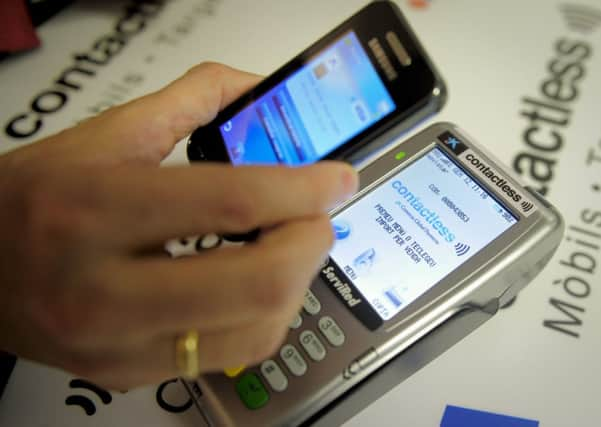Shoppers ditch cash as mobile payments rise


An international study of thousands of shoppers found that increasing numbers of consumers are using their smartphones or tablets to pay for goods and services.
While 30 per cent of people in Britain say they have used mobile devices to make payments, the trend is even more evident elsewhere in Europe.
Advertisement
Hide AdAdvertisement
Hide AdThe ING International Survey on Mobile Banking found that 56 per cent of mobile users in Turkey and 43 per cent in Poland were embracing the new methods, higher than in the United States, where the figure stands at 42 per cent.
Researchers believe that more than half (51 per cent) of European adults with access to a mobile device will use such technology over the next 12 months. At present, 33 per cent of people across the continent do so.
In the UK, payment apps growing in popularity include Zapp and Pingit, with banks signing up to the services. A number of institutions, including Bank of Scotland, HSBC and Barclays, accept the use of Paym, a mobile transaction technology which identifies its customers by their mobile phone number instead of traditional bank details such as account number and sort code.
The ING International Survey on Mobile Banking, which looked at the habits of more than 14,000 shoppers, showed that uptake of the apps was lagging behind in other parts of Europe, with only a quarter (25 per cent) of consumers in France following suit.
In Germany, the figure stands at 23 per cent, while in the Netherlands, only one in eight (13 per cent) people have made payments via smartphone or tablet.
Ian Bright, a senior economist with ING, said: “The global market for mobile payments is reported to be growing rapidly and what we’re seeing is a major shift in consumer attitudes and behaviour to support that growth – though not everyone is convinced about moving to a cashless society just yet.”
For those yet to embrace mobile payment apps, a lack of trust is cited as the biggest barrier (42 per cent). While industry leaders have made moves to improve security, the figures suggest there is still work to be done in reassuring customers that their details are secure. Despite the introduction of Apple Pay and Google Wallet, two leading services that allow payments to be made from debit or credit cards via smartphone, only one in 11 (9 per cent) had used these or other “digital wallet” services.
Users are far more likely to consider using the app associated with their bank for mobile payments (59 per cent) than “named groups” such as Apple or Google (39 per cent), the research found.
Advertisement
Hide AdAdvertisement
Hide AdMore people are using alternatives to physical cash to make purchases with half (50 per cent) of Europeans saying they use physical cash much less than they did 12 months ago. The trend looks set to continue, with 84 per cent of respondents saying they intend to use even less cash in the next 12 months.
Mr Bright added: “While physical cash still has its place in society, mobile payment apps are giving consumers greater freedom when it comes to managing their finances.
“The instant visibility offered by mobile banking also means more consumers feel in control of their finances, claiming to have avoided missing payments and keeping on top of bills.”
The research also suggests the move to mobile money management comes with added benefits.
Nearly half (48 per cent) claim to feel more in control of their finances.
FOLLOW US
SCOTSMAN TABLET AND MOBILE APPS